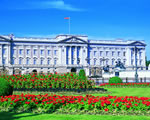 Go to main content
Go to main content
Archive Website of the UK government
Please note that this website has a UK government accesskeys system.
Main menu
Page menu
Government, citizens and rights

The honours process explained

Honours are given to people from all walks of life and all sections of society who have made a difference to their community. There are several different types of award, each one recognising a different type of contribution.
The honours system
The British honours system is one of the oldest in the world. It has evolved over 650 years as the country has found alternative means of recognising merit, gallantry and service.
Honours lists are published twice a year at New Year and in mid-June on the date of The Queen's official birthday. Anyone can receive an award if they reach the required standard of merit or service, and honours lists contain a wide variety of people from different backgrounds. Anyone can nominate someone for an award.
Reforming the honours system
In July 2004, two reports recommended changes to improve the honours system. These reports (the Public Administration Select Committee (PASC) report, and Sir Hayden Phillips' report to the cabinet secretary, both of which are linked below) led to significant changes in how the honours system works.
In February 2005, the government published a response to the reports explaining how the honours system would change to become more open, diverse and easy to understand.
Those changes led to the present honours system. The changes included changing the way honours committees work. For example, committees are now chaired by independent eminent people from outside of government, who have experience in their committee’s field. A majority of committee members are not civil servants, but professionals in fields appropriate to the honours involved.
In 2005, the government said it would issue a report on the status of the reformed honours system every three years. The latest three-year report is linked below, along with copies of the reports about the honours system mentioned above.
The nomination process
There are two routes by which people enter the system:
- nomination by an individual or a public/private sector organisation familiar with the work of the candidate.
- submission by a government department that has identified a candidate doing good work within its sphere of interest. (Candidates may be identified as a result of nominations sent to that department from public or private sources.)
Each case may go through several stages before reaching the Honours and Appointments Secretariat of the Cabinet Office.
Nomination forms sent directly (or indirectly via Buckingham Palace or 10 Downing Street) to the Nominations team of the Honours and Appointments Secretariat are sifted and checked. Some cases are referred to the relevant government department for them to consider. The remainder are dealt with centrally. Comments and feedback are sought from Lord Lieutenants, outside bodies and departments which may have an interest in an aspect of the candidate's work. Once the case is ready it is sent to the Honours team.
Candidates that have been identified by a department (together with nominations cases) are also checked and sifted. The department's cases are assessed by an internal committee. The department will then submit its candidates to 10 Downing Street from where they go to the Honours team of the Honours and Appointments Secretariat.
Once the case reaches the Honours team it is prepared for consideration by one of a series of specialist assessment sub-committees. Similar candidates are submitted together so that each committee may compare like with like. Each committee is composed of senior civil servants and independent experts.
Their assessments are sent to the main selection committee. The main committee considers the balance of the proposals and forwards its recommendations to the Cabinet Secretary who, in turn, submits the list to the Prime Minister for submission to The Queen.
Once The Queen has given her informal approval, letters are then sent to each nominee asking them whether they would be willing to accept the proposed award. Once they have replied a final list is submitted to The Queen for formal approval.
The list is published in The London Gazette and the Central Chancery of the Orders of Knighthood at St James's Palace arrange investitures for the successful candidates.
The Honours and Appointments Secretariat
The UK Honours System is managed by the Cabinet Office Honours and Appointments Secretariat.
The 'Ceremonial Branch' was created in 1937 with responsibility for honours policy work across government. It became known as the Ceremonial Secretariat in 2001, and subsequently the Honours and Appointments Secretariat in 2008.
The Secretariat is responsible for:
- preparation of the Prime Minister's half-yearly Honours Lists
- the provision of advice on all honours matters to the Head of the Home Civil Service
- co-ordinating policy on the award of decorations and medals in the UK: providing advice as necessary to the Foreign and Commonwealth Office and the Ministry of Defence
- the receipt, acknowledgement and processing of honours nominations made by members of the public
- policy on, and assessment of, individual cases leading to civilian gallantry awards
- the assessment and processing of recommendations for the Imperial Service Medal
Peerages
Peerages are not honours. Since May 2000 Peers nominated by political parties have been vetted by the House of Lords Appointments Commission. The House of Lords Appointments Commission also recommends people for non-party peerages.
 Facebook
Facebook Twitter
Twitter StumbleUpon
StumbleUpon Delicious
Delicious Reddit
Reddit
